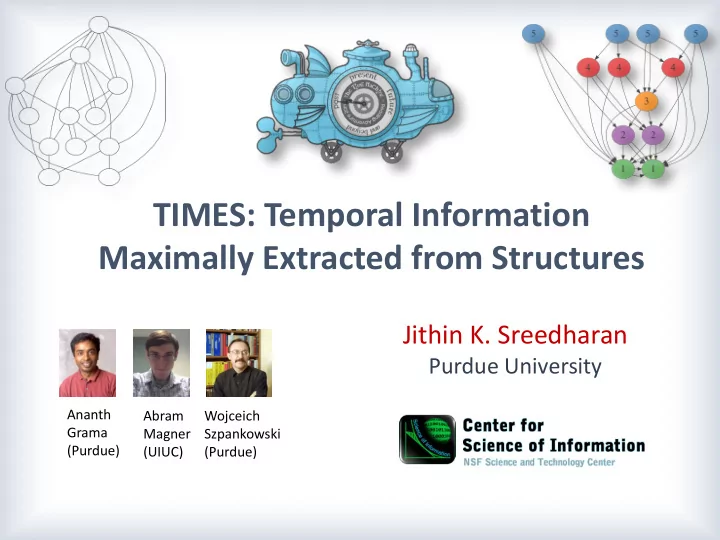

TIMES: Temporal Information Maximally Extracted from Structures Jithin K. Sreedharan Purdue University Ananth Abram Wojceich Grama Magner Szpankowski (Purdue) (UIUC) (Purdue)
The Problem: Recovery of Node Arrival Order Reverse engineer the dynamic process to 1 infer network trajectories Dynamic graph 2 1 4 3 2 9 5 6 4 3 8 7 11 𝐻 9 5 6 10 12 8 11 7 10 12 5 5 5 5 Graph with node label as arrival order 4 4 4 3 2 2 Graph with partial node labels 1 1 Jithin K. Sreedharan WWW'18 2
Where is arrival order information useful? Social networks: online spam spreading or rumor propagation Spread of infectious diseases: origin and initial carriers Ebola spread network Financial transaction networks: [Saey, ScienceNews Dec 2015] flow of capital Network of biochemical reactions: (protein-protein interaction network) Study of the phylogenetic tree Cancer proteins tend to be ancient proteins [Srivastava et al., Nature 2010] Jithin K. Sreedharan WWW'18 3
Prior Works [Bubeck, Devroye, and Lugosi 2016] For preferential and uniform attachment trees, finds the set that contains root node w.h.p. [Frieze and Pegden 2017] For preferential attachment graphs, locates the oldest node by a random walk process. Assumes arrival info is known when a node is sampled. [Shah and Zaman, 2011] Oldest node in Susceptible-Infected epidemic model [Zhu and Ying, 2016] Oldest node in Susceptible-Infected-Recovered epidemic model Several works on "Counting linear extension of partial order sets” Jithin K. Sreedharan WWW'18 4
Recommend
More recommend